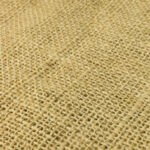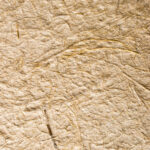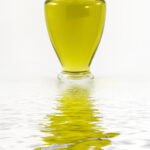AAIC Divisions
The AAIC has five divisions. Click on each division to learn more information about the crops and focus of the division.
Division Chair: Dilpreet Bajwa
Dept. Mechanical and Industrial Engineering
Montana State University
Bozeman, MT 59717 USA
Email: dilpreet.bajwa@montana.edu
Scope of the Division:
The scope of the division is to conduct research and/or develop procedures/techniques associated with utilizing fiber and cellulosic crops in support of varied industries. The members of the division work in various disciplines, including germplasm development, cultivation, agronomic practices, industrial processing, and marketing. The chemical, physical, and biological properties of fiber and cellulosic crops are defined and documented. Biotechnological approaches to crop improvement and product utilization are studied. Research performed ranges from fundamental mechanisms to support of product commercialization.
Fibers include any biological material that is a continuous filament or discrete elongated piece. Fibers and Cellulosic research encompasses the development, production, processing, and utilization of biological fibers and cellulosic materials in the production of products and/or energy. Research is designed to promote agriculture, enhance rural economic development and find alternatives to petroleum-based products.
Crops and processes researched by the members of the division include a wide array of plant species and their derived products. The disciplines of the division members are as diverse as the crops they study.
Crops Investigated:
- Kenaf
- Switchgrass
- Hemp (Sunn hemp (Crotalaria juncea)
- Flax
- Sisal
- Jute
- Hesperaloe
- Ramie
- Biomass Residuals (bagasses, stovers, waste streams from agricultural processing facilities)
Division Chair: James V. Anderson
USDA-ARS, Edward T. Schafer Agricultural Research Center
Weed and Insect Biology Research Unit
1616 Albrecht Boulevard N
Fargo, ND 58102-2765
701-239-1263 (Office)
701-388-7582 (Cell)
701-239-1252 (Fax)
Email: james.v.anderson@usda.gov
Scope of the Division:
The scope of the division is to conduct research and development in support of industrial oilseed crops. The members of the division work in various disciplines, including germplasm development, genetic engineering, cultivation and agronomic practices, and industrial processing technologies. Research performed ranges from fundamental biology to marketing of different crops and their products for supporting of product commercialization.
Many industrial oilseed crops currently grown throughout the worldwide are used to produce various bio-based products such as lubricants, adhesives, components of plastics, degradable inks, paint additives, and detergent surfactants. The growing biodiesel market offers the potential for large-scale use of oilseed crops. In addition, the U.S. imports oils such as castor oil and palm oil for industrial use. Some crops have a high unusual fatty acid composition in their seed oil. For example, castor oil contains up to 90% ricinoleate (12-hydroxyoctadeca-9-enoic acid), and vernonia oil contains 73-78% of vernolic acid (12,13-Epoxyoctadeca-9-enoic acid). These traits can confer unique chemical and physical properties and provide improved products out outperforming to petroleum-derived counterparts.
Crops Investigated:
- Cuphea
- Camelina
- Canola
- Castor
- Lesquerella
- Moringa
- Peanut
- Pennycress
Division Chair: Manuel Carmona Delgado
Universidad de Castilla-La Mancha
Instituto de Desarrollo Regional, IDR
Campus Universitario s/n 02071
Albacete, Spain
Tfno: +34 967599200 Ext. 2567
Email: Manuel.Carmona@uclm.es
Scope of the Division:
The scope of the division is to conduct research and development in support of industrial natural rubber and resin-producing crops. The members of the division work in various disciplines, including germplasm development, cultivation and agronomic practices, and industrial processing technologies. The chemical, physical, and biological properties of this important class of natural products are defined and documented. Biotechnological approaches to crop improvement and product utilization are studied. Research performed ranges from fundamental mechanisms to support of product commercialization.
Natural rubber is polyisoprene, usually of high molecular weight, produced by biosynthesis in plants. This natural product has been used since Mesoamerican games played with rubber balls as early as 1600 BC, and today is a critical raw material in thousands of industrial products. Supplied to the world primarily by Hevea brasiliensis from tropical countries, rubber from alternative crops has been used worldwide during times of short supply. In the 21st century, rubber-producing crops offer opportunities for rural economic development, supply security of a strategic raw material, and biobased replacements for petroleum-based polymers.
Crops Investigated:
Parthenium argentatum – guayule
Taraxacum kok-saghyz – Russian dandelion
Hevea brasiliensis – Brazilian rubber tree
Lactuca spp. – lettuce
Eucommia ulmoides - Chinese elm
Division Chair: Laura DE MARTINO
Department of Pharmacy/DIFARMA
University of Salerno
84084 Fisciano SA, Italy
Email: ldemartino@unisa.it
Scope of the Division:
The goal of the division is to promote research and development activities in medicinal and nutraceutical crops to support various industries. Members of the division conduct research in several disciplines within these crops. Research is ongoing in germplasm selection, evaluation, cultivation, harvesting, processing, product development, and marketing of crops and their respective products. In addition, members also conduct research related to the agronomic, chemistry, genetics, quality, and biological activities of these crops.
Medicinal plants are defined as those plants containing phytochemicals, secondary metabolites, or primary metabolites that have a medicinal action in humans and animals. Nutraceutical plants produce healthy phytochemicals that are formulated and intake is in the form of capsules, tinctures, or tablets. Functional foods are a component of nutraceuticals and are consumed as foods, and not in dosage form.
Medicinal and nutraceutical plants offer a wide array of products utilized or can be utilized in the pharmaceutical and functional food industries.
Crops Investigated:
Members in this division have been conducting research in the following crops for their medicinal and nutraceutical attributes:
- Aloe (Aloe vera): Leaves
- Amaranth oil (Amaranthus spp.) for cardiovascular disease.
- Borage (Borago officinalis L.): seeds (gamma linolenic acid)
- Calendula (Calendula spp.) flower for wound healing (water soluble flavonoids), anti-inflammatory, may inhibit HIV, anti-bacterial, and anti-tumor. Skin and cancer treatments.
- Calendula (Calendula officinalis L.): seeds (calendic acid).
- Candelilla (Euphorbia antisyphilitica): natural waxes.
- Camelina (Camelina sativa L.): seeds (omega-3-fatty acids).
- Chia (Salvia hispanica) bread for reducing cardiovascular risk factors (proteins, antioxidants, fatty acids)
- Hemp (Cannabis sativa)
- Echinacea (Echinacea angustifolia, E. pallida, E. purpurea) for reducing the common cold.
- Evening primrose (Oenothera biennis) oil for osteoporosis.
- Fennel (Foeniculum vulgare) for colic and constipation.
- Ginseng (Panax quinquefolius) gensenosides for reducing type 2 diabetes and may reduce respiratory tract infections as well as influenza.
- Guar (Cyamopsis tetragonoloba) gum relieves constipation, reduces type 1 and 2 diabetes, and lowers cholesterol. Partially hydrolysed guar gum effective in irradicating small intestinal bacterial growth.
- Herbs (Origanum sp, Pelargonium sp, Lippia sp, Cymbopogon sp, Thymus sp): sources of essential oils and antioxidant polyphenols, and dried plant parts for use as spices, and herbal teas.
- Herbs (Salvia sp, Teucrium sp, Sideritis sp): diterpenes and flavones against polyphagous moths
- Hibiscus (Hibiscus sabdariffa): dried calyces (anthocyanins).
- Mint (Mentha spp.) for relieving tension headaches.
- Moringa (Moringa oleifera): seeds, leaves (fatty acids, nutritional elements, antioxidant polyphenols).
- Plantago (Plantago psyllium) works as a bulk laxative and reduces constipation.
- Purple Viper's Bugloss (Echium plantagineum): seeds (omega-3 and 6 fatty acids).
- Pyrethrum (Tanacetum cinerariifolium) treats lice.
- St. Johns Wort (Hypericum perforatum) extracts for depression, may improve wound healing, and reduce scar formation.
- Sesame (Sesamum indicum) for sesamin, sesamolin, and tocopherols.
- Yuca (Yucca carnerosana), lechuguilla (Agave lechuguilla), gobernadora (Larrea tridentata), quinua (Chenopodium quinoa); and hojasen (Flourensia cernua): Plant extracts and isolated components against pathogens (e.g. Fusarium oxysporum).
Division Chair: Efi Alexopoulou
Centre for Renewable Energy Sources and Saving (CRES)
19th km Marathonos Avenue
19009, Pikermi, Greece
Email: ealex@cres.gr
Scope of the Division:
The general crops and products division includes production research as well as the developing of procedures/techniques associated with utilizing these crops in support of varied industries including the biofuel industry. The members of the division work in various disciplines, including agronomic practices, industrial processing, and marketing.
The general crops and products division includes diverse crop species such as cover crops, pulse crops, pseudocereals, and forage or biomass crops used for bioenergy. Also includes the use of agricultural residues for bioproducts development.
Crops Investigated:
- Sweet sorghum and forage sorghum
- Alternative pulse crops
- Cover crops
- Pseudocereals
- Milkweed
- Pear millet






